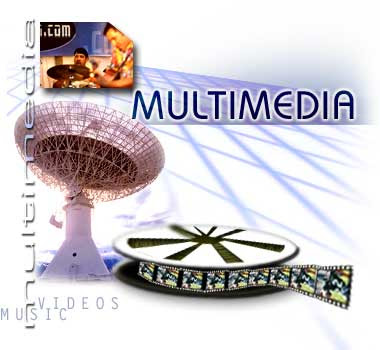| Lesson 2 | What is Multimedia? |
| Objective | Describe multimedia as it applies to a database. |
How is multimedia used in Oracle 12c?
Oracle 12c, the twelfth edition of Oracle's flagship database management system, leveraged multimedia extensively, representing a significant leap from its predecessors. This utilization was designed to cater to the modern needs of applications that rely heavily on rich content like images, audio, and video. Here's a detailed examination of multimedia integration in Oracle 12c:
Oracle 12c's approach to multimedia was not merely as an afterthought but as an integral component of modern database management. By providing specialized data types, processing capabilities, spatial integrations, and enhanced security features, Oracle 12c firmly established its readiness to handle the multimedia demands of contemporary applications with confidence and precision.
- Oracle Multimedia (formerly Oracle interMedia):
- Rich Content Data Types: Oracle 12c provided specialized data types designed to efficiently store, retrieve, and manage multimedia content, such as ORDAudio, ORDImage, ORDVideo, and ORDDoc.
- Content Processing: Oracle 12c facilitated the processing of multimedia content within the database itself. This included tasks such as image scaling, format conversion, and audio/video clipping.
- Metadata Extraction: Oracle Multimedia allowed for the extraction of metadata from multimedia files. For example, it could pull specific details from an image file like its dimensions, format, or compression type.
- Locator and Spatial Capabilities:
- Georeferencing Multimedia: Oracle 12c's enhanced spatial capabilities meant that multimedia data could be associated with geographical locations, paving the way for location-based multimedia services.
- Spatial Queries: These functionalities enabled complex queries that incorporated both multimedia and geographical data, enhancing the scope of applications in domains like real estate, tourism, and urban planning.
- Direct File System Access:
- BFILE Data Type: Oracle 12c supported the BFILE data type, enabling direct access to multimedia files stored outside the database in the server's file system. This was especially valuable for applications that required quick, direct access to large multimedia files.
- Media Streaming:
- Database Resident Connection Pooling (DRCP): Leveraging DRCP, Oracle 12c provided efficient media streaming capabilities, ensuring that multimedia content was delivered smoothly to end-users or applications, optimizing the user experience.
- Optimized Network Transfer:
- Ordinary Large Objects (LOBs): LOBs in Oracle 12c facilitated efficient storage and retrieval of large multimedia files. Features like SecureFile LOBs improved the performance of multimedia data operations.
- Interoperability and Integration:
- Standard-Based Format Support: Oracle 12c offered robust support for a multitude of multimedia formats. This standard-based approach ensured that multimedia data could be integrated seamlessly across different platforms and applications.
- Web Services and APIs: Oracle 12c provided a plethora of APIs and web services that facilitated the manipulation and management of multimedia content. These services ensured compatibility with modern web applications and platforms.
- Security Enhancements:
- Transparent Data Encryption (TDE): Given the sensitivity of multimedia content, Oracle 12c incorporated TDE, enabling the encryption of multimedia data to ensure its security during storage and transfer.
Oracle 12c's approach to multimedia was not merely as an afterthought but as an integral component of modern database management. By providing specialized data types, processing capabilities, spatial integrations, and enhanced security features, Oracle 12c firmly established its readiness to handle the multimedia demands of contemporary applications with confidence and precision.
What does Multimedia mean?
Multimedia, when broken down into its two root words, simply means "many ways." In the communications field, it generally refers to a presentation that uses several different methods to convey information, such as slides, speakers, film, and live performances.
In the context of a computerized database system, multimedia refers to data of many forms. Typical examples of multimedia data are shown in the graphic below.

Multimedia data presents the following challenges to the traditional relational database:
- Multimedia data is not text or numbers, so it cannot be queried using traditional Structured Query Language (SQL) queries.
- Multimedia data is often in large chunks, so it can take up many times more space than typical text or numerical data.
- Multimedia data is in specialized formats, so it cannot be displayed directly from the database the way text and numbers can be displayed.